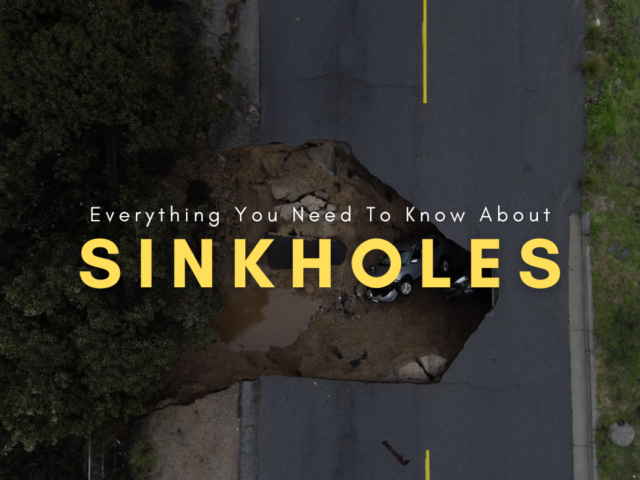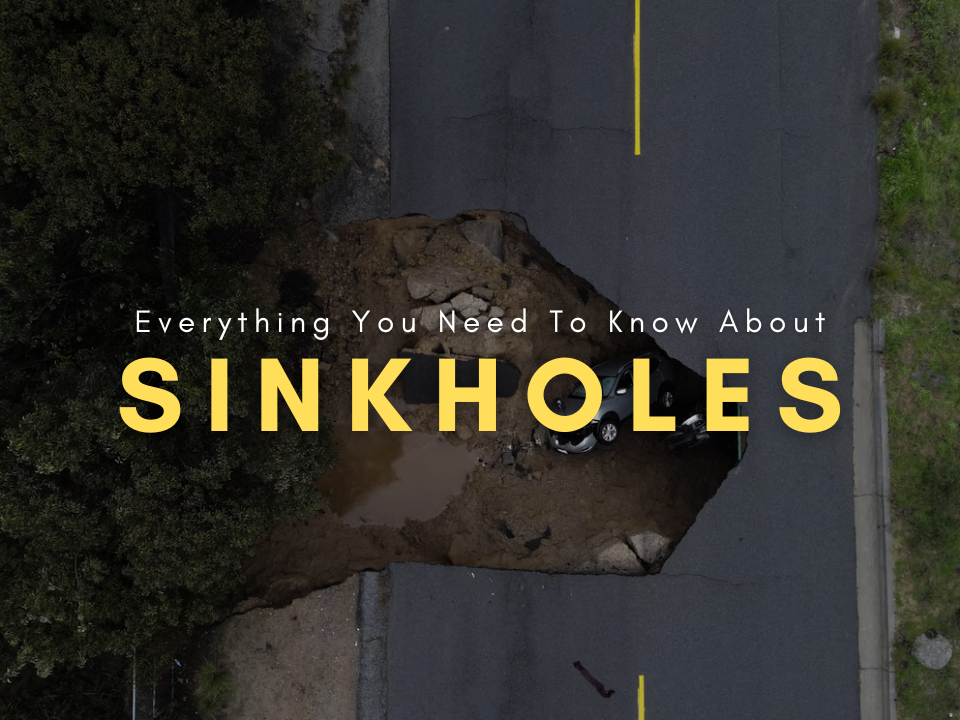
The recent incident in Kuala Lumpur, where a woman fell into an 8-meter-deep sinkhole, serves as a stark reminder of the hidden dangers that can lurk beneath our feet. Sinkholes can form unexpectedly, posing a serious threat to public safety. Due to the recent tragedy happening, it is important to learn the sinkholes signs to ensure your safety.
How Sinkholes Are Formed
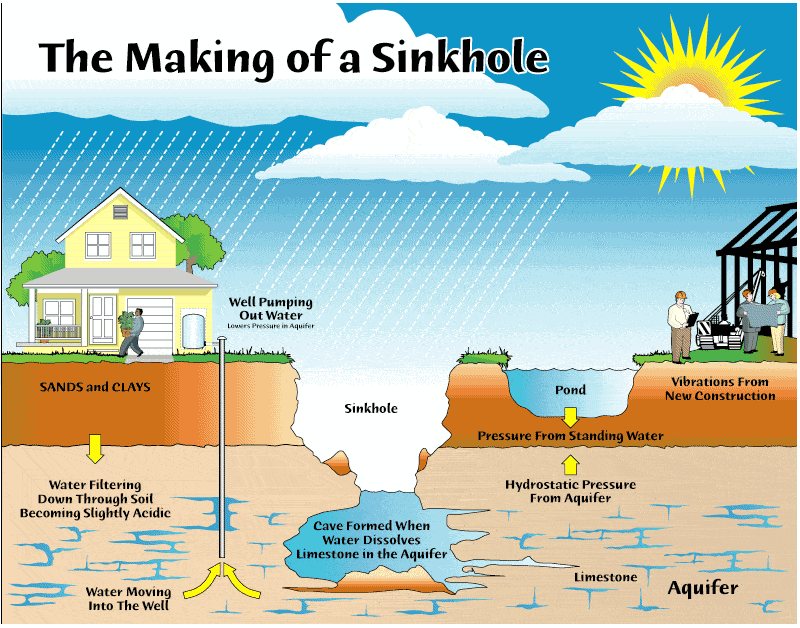
Image via ZME Science
Sinkholes are fascinating yet dangerous geological features that can form suddenly and without warning. While the exact mechanisms can vary, here are some common ways sinkholes develop:
1. Dissolution: In areas with soluble rocks like limestone or gypsum, groundwater can dissolve the rock over time, creating underground cavities. As these cavities grow, the overlying ground may eventually collapse, forming a sinkhole.
2. Erosion: Running water can erode the soil beneath the surface, leading to the formation of cavities. Over time, these cavities can become large enough to cause the ground to collapse.
3. Subsidence: In areas with underground mining or pumping of groundwater, the ground can subside as the underlying material is removed. This can create voids that may eventually collapse.
4. Catastrophic Collapse: Sometimes, sinkholes can form suddenly and without warning due to a combination of factors, such as heavy rainfall, seismic activity, or changes in underground water flow.
It’s important to note that sinkhole formation can be influenced by various factors, and the exact mechanism may vary depending on the specific geological conditions of a region.
How To Spot A Sinkhole
While it’s not always easy to predict a sinkhole, there are certain signs to watch out for:
1. Sudden Sinkholes
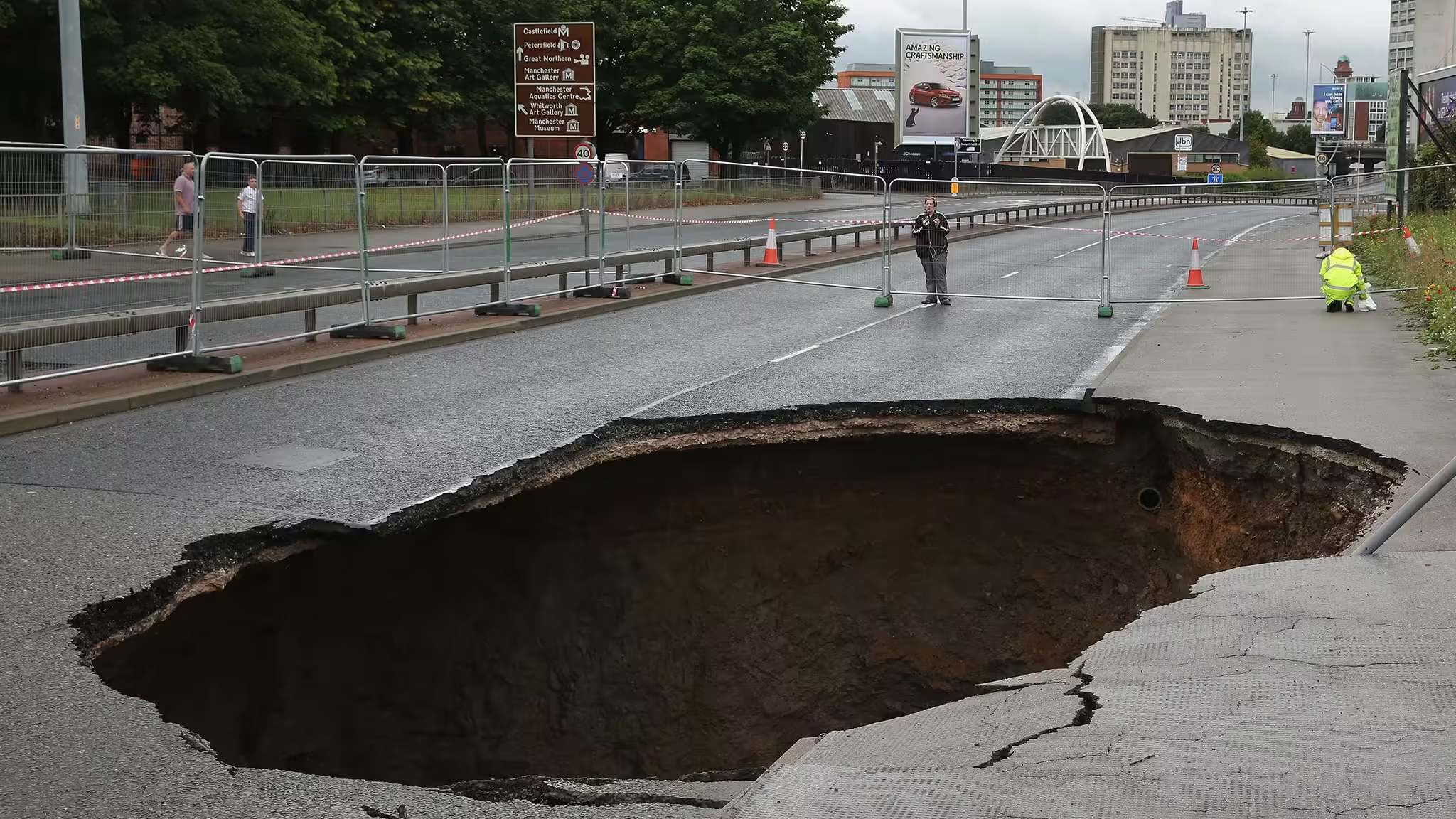
Image via The Independent
These often appear without warning, but they can also form gradually over time.
2. Circular Depressions
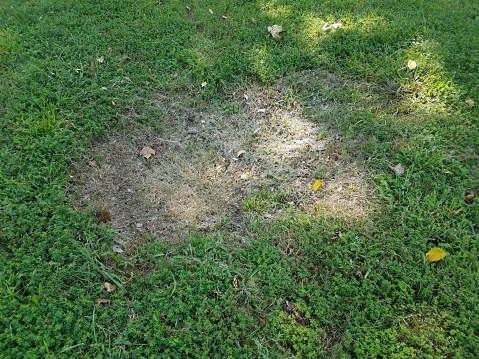
Image via iStock
Look for circular or oval-shaped depressions in the ground.
3. Cracks And Fissures
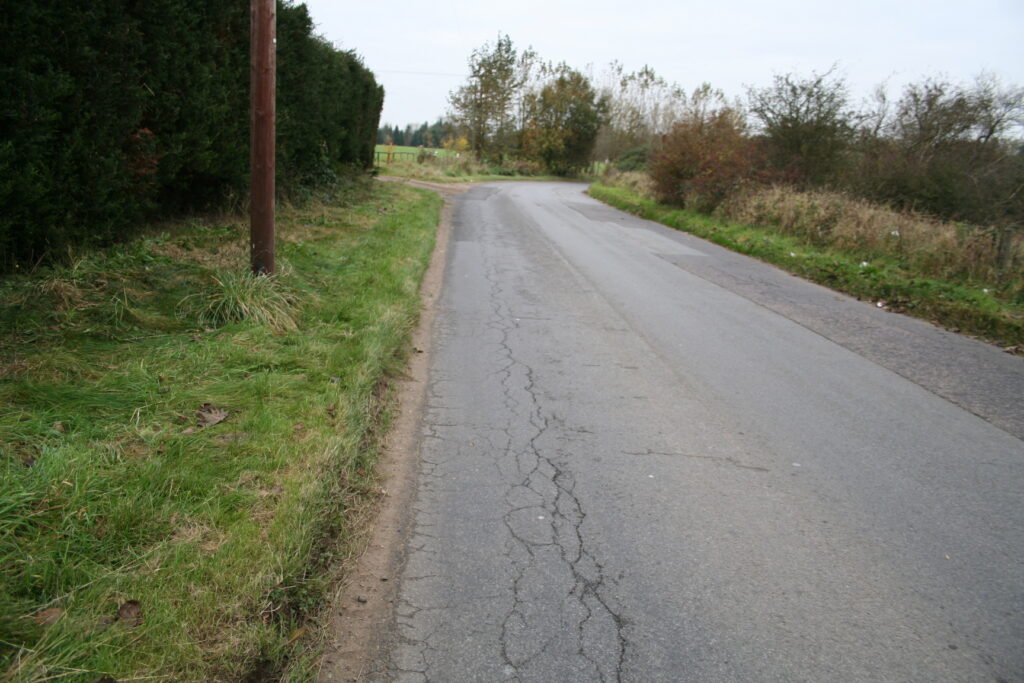
Image via Tensar International
Cracks in the ground, especially those that are widening or appearing suddenly, can be a sign of an impending sinkhole.
4. Tilting Trees Or Structures
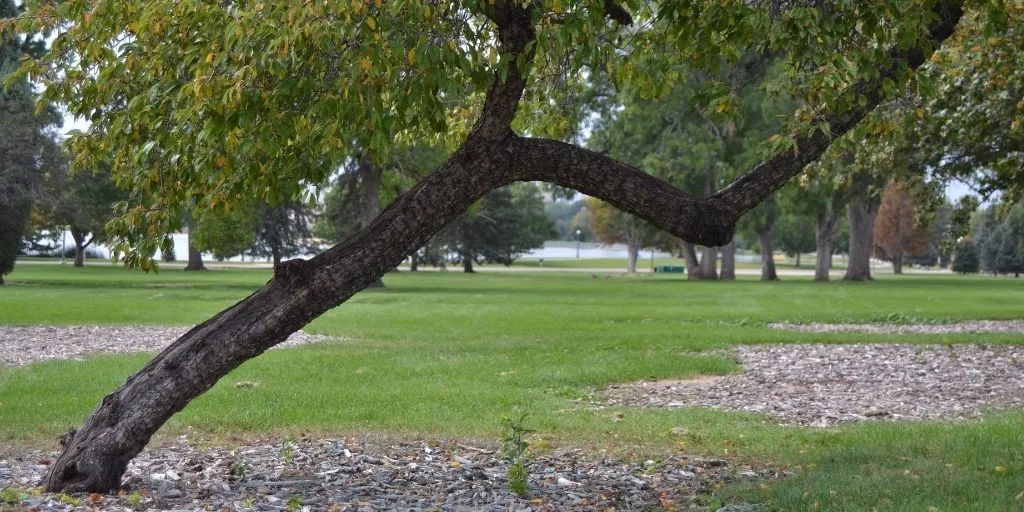
Image via Alpine Tree Service
If trees or buildings are tilting or leaning, it could indicate an underlying problem.
What To Do If You Suspect A Sinkhole
If you notice any of these signs, it’s important to take immediate action. Report the potential sinkhole to local authorities. Do not attempt to investigate or approach the area, as it could be unstable.
Preventing Sinkholes
While it’s not always possible to prevent sinkholes, proper infrastructure maintenance and monitoring can help reduce the risk. Regular inspections of underground pipes and drainage systems are crucial. Additionally, paying attention to changes in the environment can help identify potential problem areas.
Sinkholes can pose a serious threat to public safety. By being aware of these sinkholes signs and taking precautions, we can help prevent accidents and minimise the impact of these natural hazards.




